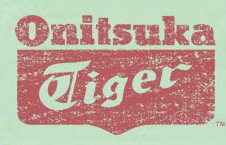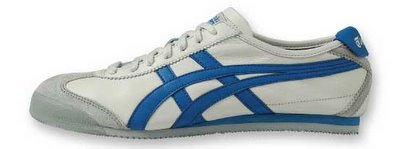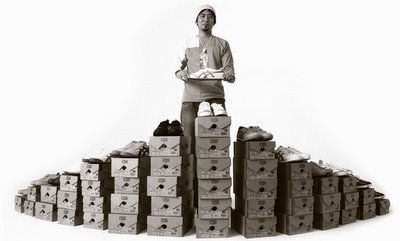Shoe addiction again
 Hee...stumbled on the latest ASICS revival of shoe range called Onitsuka Tiger. However anyone have any idea what ASICS stands for? Anima Sana In Corpore Sano
Hee...stumbled on the latest ASICS revival of shoe range called Onitsuka Tiger. However anyone have any idea what ASICS stands for? Anima Sana In Corpore SanoActually i liked this pair of sport wear called Mexico 66 which was built with suede leather and look amazingly light. I guessed it is quite a likeable pair of street wear.
They even have a ad accompanied with this Asics Mexcio66. Available in various colors.
Check Onitsuka Tiger America out here,
And Onitsuka Tiger UK


There the big question is, who is FAILE? [Taken from Onitsuka Tiger UK, sorry lah. Lazy to summarize]
Faile are an international collective of artists and designers, famed for their striking iconography and unique style. Their artwork is as much at home on a city wall as in an uptown gallery. Faile’s work has attracted a loyal international following, with exhibitions in LA, London, Tokyo and Copenhagen. They have worked on projects within the worlds of design, music and fashion, and are widely acknowledged as some of the pioneers in the contemporary street art movement. More information and exhibition details are available on Faile.net.
And just to excite myself, allow me to intro Ontisuka Tiger's history.. :p
The founder of the now well-known shoes and apparel brand ASICS had already led an adventurous life, when in 1949, at the age of 31, he entered a new phase in his life. After years in the military and having worked for a company who bought and sold beer on the black market, Onitsuka decided that sports could play an important role in rebuilding the self-esteem of the youngsters in Japan. He learned how to manufacture shoes and founded Onitsuka Co Ltd. It was the start of a company that would develop into one of the five largest brands in the world market of sports shoes.
Straw sandals
Yukio Matsumoto, head coach of the Kobe High School basketball team, urged Onitsuka to start manufacturing basketball shoes. He strongly believed that basketball would soon become a popular sport in Japan. Onitsuka’s first shoe design resembled a straw sandal rather than a basketball shoe and was greeted with mockery by the school coach.
From that moment on Onitsuka came over to watch the basketball team practice whenever he could. He observed the movements of the feet and started wondering how he could enable the players to make sudden stops and starts.
 Suction cups
Suction cups
In the summer of 1951, during a vacation, Onitsuka saw a plate with pickles and octopus legs. He suddenly realised that the suction cups of the octopus could be the key he had been looking for. He used the concept of the suction cups for the sole of the basketball shoes he was working on at the time and took his new shoes to the team. One of the players tried the shoes and the sole design proved so effective that he tumbled and fell when he made a sudden stop. Onitsuka adjusted the shape of the suction cups and he finally had what he wanted: basketball shoes that made it possible to stop and start without slipping.
The support of the coaches and players proved crucial to the success of Onitsuka. When he took samples of his shoes to the sports stores, their first reaction was that they could not do business with him because they only bought from wholesalers. The young entrepreneur then visited the basketball coaches of high schools and showed them his basketball shoes.
The coaches were enthusiastic and went with him to the stores to tell them that the students would be wearing Onitsuka shoes from then on. All Onitsuka had to do after that was write down the orders.
Blisters
By 1953 Onitsuka had broadened his interest towards running shoes. Working with top Marathon runner Tooru Terasawa, he decided to try and develop a way to avoid long distance runners getting blisters. The air-cooling system of motorcycles served as an inspiration. He used a loosely woven cloth for the top of the shoes and made a number of holes in the front and the sides. As a result of these measures the feet were now able to “breathe”. In addition Onitsuka designed a two-layered sole to soften the impact. Terasawa tried the shoes on and ran 42 kilometres and 195 metres without blisters for the first time.
Abebe Bikila
It took a little persuasion to get the legendary Ethiopian Marathon runner Abebe Bikila to wear Tiger shoes. As a matter of fact, up until 1957, Abebe didn’t wear shoes at all. When Onitsuka saw Abebe winning the Olympic Marathon in 1956 in Melbourne, Australia, he was worried about the future of his company. Abebe ran barefoot. The next year, when Abebe Bikila ran the Mainichi Marathon in Japan, Onitsuka visited him in his hotel. “Why didn’t you bring your shoes?” Onitsuka asked. “Because I don’t have any”, was the athlete’s answer. After Onitsuka had explained to him that Japanese roads are littered with glass and therefore running bare-foot could be dangerous, Abebe was willing to give the Tiger running shoes a try. Onitsuka hurried back to the factory and gave his technicians the order to manufacture the world’s lightest pair of shoes immediately. The next day Abebe Bikila won the marathon. He wore shoes ever since.
Shares
In 1958 Onitsuka, who had bought the “Tiger” brand a year before, celebrated the 10th anniversary of his company in an astonishing way. He had decided that Onitsuka should not become a family-run business, but an employee-run business. He distributed 70 percent of the shares to his employees. Half of the total capital was handed free of charge to senior employees, in accordance with their achievements. Twenty percent of the capital was offered to younger employees for a fee.
Preparing for the 1972 Sapporo Winter Olympics, GTO, manufacturer of sportswear and nets, Jelenk, manufacturer of knit wear and Onitsuka built a regional sales office together on a piece of land near Hokkaido.
It turned out to be the starting point of a historic merger that made an old dream of Kihachiro Onitsuka, a complete sporting goods company, come true. After years of negotiations the deal was finalised towards the end of 1976. In 1977 GTO, Jelenk and Onitsuka merged to form a new, strong and progressive enterprise. To find an appropriate name for their new company, the founders turned to the Ancient Romans and found an old Latin phrase: Anima Sana In Corpore Sano (a sound mind in a sound body). The world of sports welcomed a new, promising name: ASICS

5 Comments:
going thru my third pair of asics.
Anima Sana In Corpora Sano which translates as A Sound Mind in a Sound Body.
the revival was start-stop during the kill bill years
I got one pair of ASICS as well, last night i brought an Addias Short, the cashier used to work for ASICS, and we all agreed that ASICS footwear are made very light.
Amazing stuffs. I tempted again, how?
go n buy la HOW !!
hehhee
do you know there is an onitsuka tiger shop at wheelock called three sixty or something like that
Yes, i knew. I went there last week, and if u head to Hereen 5th level. There also another retail store selling as well.
:D
Post a Comment
<< Home